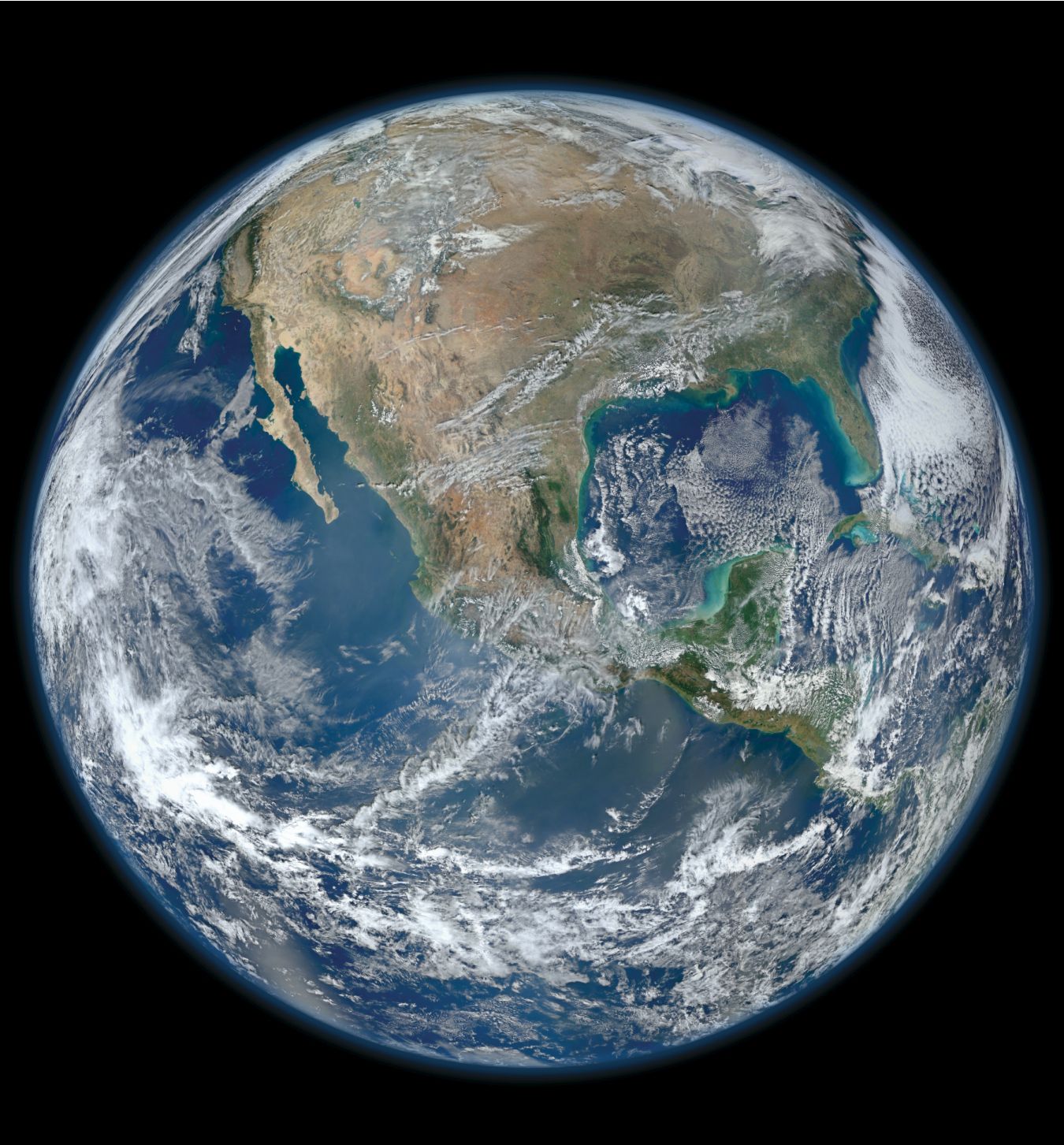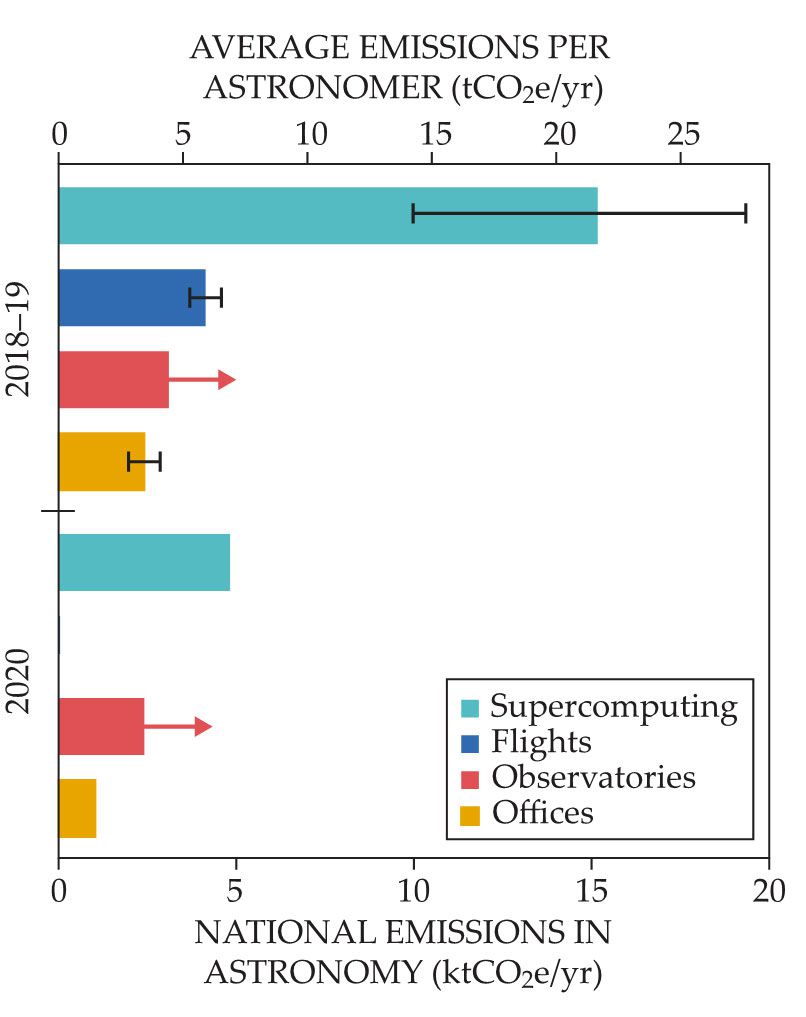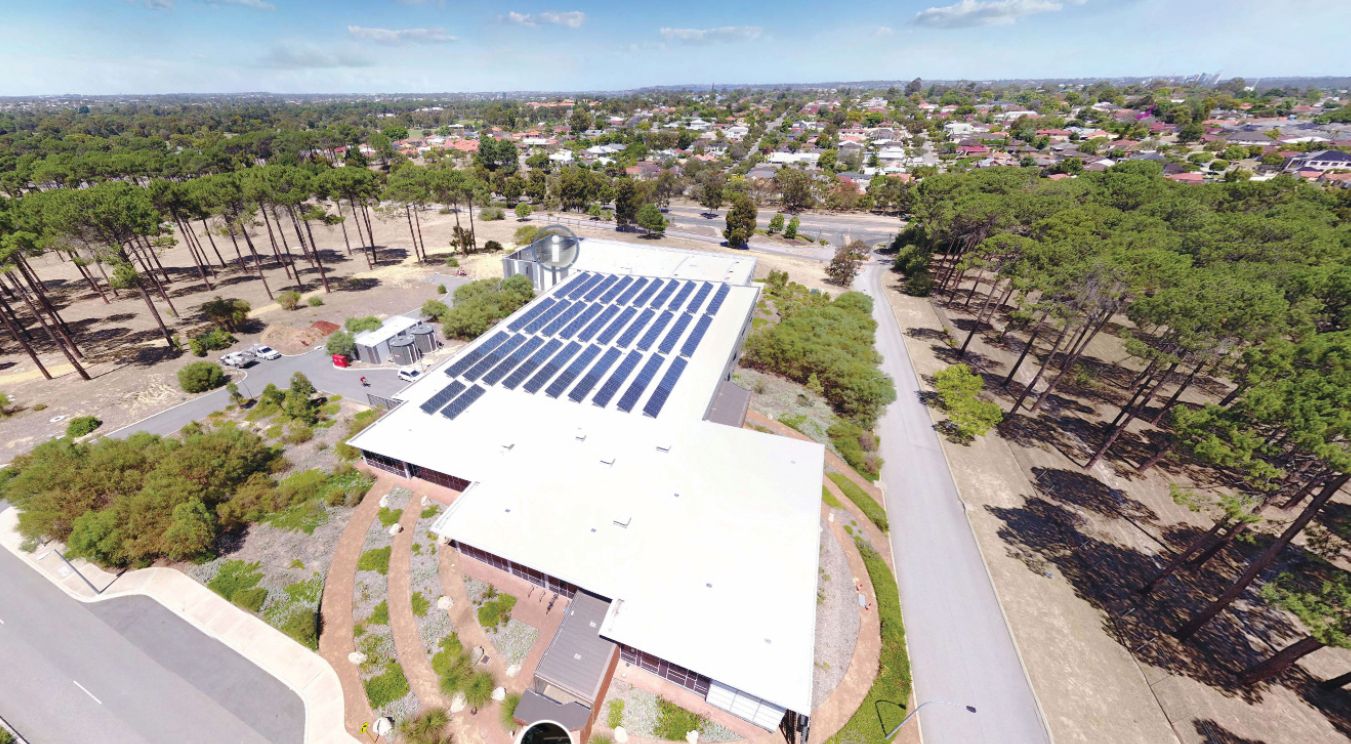A sprinkling of scientists prioritizes behaviors to counter climate change
DOI: 10.1063/PT.3.4877
“Plenty of people believe humans could move to another planet,” says Adrienne Cool, a professor at San Francisco State University who studies globular clusters. “That narrative is out there, and part of our job as astronomers is to counter it, to make clear that there is no Planet B.” A few years ago, Cool was “struggling with the contrast of spending time and mental energy thinking about things that are so far away when what’s happening here on Earth is so urgent.” She, colleagues, and students resolved to work toward climate sustainability.
Meanwhile, in June 2019, astronomers in Europe gathered for a conference in Lyon, France, recalls Leo Burtscher, a staff astronomer at Leiden University. “There was a heat wave, and a group of us started talking about high temperatures being the new normal and how we are contributing to climate change,” he says. “I see it as irresponsible, ethically and professionally, to burn fossil fuels for astronomy.” Over Twitter, the group launched a sustainability movement for astronomers.
In October 2019 the nascent grassroots organizations in the US and Europe merged to form Astronomers for Planet Earth. A4E now has more than 1300 members in 73 countries. The group seeks ways for astronomers to minimize their discipline’s contributions to climate change and to serve as role models for other academics, students, and the public.
In fall 2018, scientists in France formed Labos 1point5, a group that is working to mitigate climate change at individual, institutional, and political levels. The group’s name refers to the 2015 Paris Agreement’s goal of limiting the rise in average global temperature above preindustrial temperatures to 1.5 °C (see, for example, “Paris carbon cuts are insufficient, UN report warns

The blue marble. Scientists and their institutions are mobilizing to avoid the worst predictions for the planet if climate change continues unabated. (Composite image by NASA/NOAA/GSFC/Suomi NPP/VIIRS/Norman Kuring.)

Olivier Berné is an astronomer who works in Toulouse at the Research Institute in Astrophysics and Planetology of the CNRS. He’s also the cofounder of Labos 1point5 with agronomist Tamara Ben Ari of the French National Institute for Agriculture, Food, and Environment (INRAE) in Paris. “We saw a paradox,” Berné says. “As scientists, we were well aware of climate change, yet we didn’t change our behavior to take it into account.” The group grew to more than 1000 members across academic fields after it published an op-ed in Le Monde in March 2019.
Around the world, pockets of individual scientists and institutions are taking steps to counter climate change. They are estimating carbon footprints, setting up remote conferences, designing greener facilities, and switching to plant-based cafeteria meals—estimates depend on production practices and other factors, but a vegan diet has roughly half the carbon footprint of an omnivorous one. They are also working to elevate such activities from the spotty to the systemic.

Estimating carbon footprints is a first step toward lowering them. The plots show total national emissions in astronomy and average emissions per astronomer in Australia in 2018–19 (upper bars) and in 2020 (lower bars); the units are tons of CO2 equivalent per year. Emissions decreased because of the ongoing grounding of air flights during the COVID-19 pandemic and the switch by some of Australia’s supercomputer centers to renewable energy. The arrows on the red bars indicate lower limits because data from observatories were incomplete. (Courtesy of Adam R. H. Stevens.)

“We as scientists understand what climate scientists are saying. If we do not take seriously what our colleagues are saying, then why should the public?” says high-energy physicist Valerie Lang, a junior faculty member at the University of Freiburg in Germany.
Quantifying emissions
A first step for many scientists and institutions has been to estimate their own carbon footprint. “If we don’t have numbers, we can’t draw conclusions or know where to focus our attention,” says Lang, who heads the sustainability initiative for Germany’s association of young high-energy physicists.
Knud Jahnke, a staff astronomer at the Max Planck Institute for Astronomy in Heidelberg, Germany, first did a carbon assessment for the institute a decade ago. He did another in 2018, inspired, he says, by activist Greta Thunberg. He found that the main areas to focus on to reduce emissions are air travel, heating, and electricity consumed by supercomputing. Heating is an infrastructural issue that scientists can’t easily change, Jahnke notes. So, he says, “what do we do about traveling and electricity?”
Members of Labos 1point5 created a tool to estimate carbon footprints (https://labos1point5.org/ges-1point5
Robin Arsenault, who heads the European Southern Observatory’s sustainability project, says that ESO emits an estimated 28 000 tons of carbon dioxide per year. The main contributors are electricity consumption, which includes heating, cooling, and powering computers and servers; travel, including staff commutes to work and flights to meetings and to the observatory’s telescopes in Chile; and indirect emissions originating with the goods and services it purchases. “None of this is an exact science,” he cautions. “The error bars are large. Absolute accuracy is not critical. The important point is to monitor and reduce emissions.”
“Organizations often get hung up on quantifying emissions and setting targets,” says Claire Hoolohan, a research fellow at the University of Manchester’s Tyndall Centre for Climate Change Research who is looking at how UK universities are responding to climate change. While estimating carbon footprints can be useful, she says, “immediate action” is needed.
UK universities have worked for years to reduce campus energy use, says Hoolohan, and are increasingly considering other sources of emissions. Food service is one area where emissions reductions are being made. The Tyndall Centre switched to serving only plant-based foods a few years ago, for example, and some universities have stopped serving red meat. The COVID-19 pandemic has created opportunities to revamp academic practices and priorities, she notes. “Moving forward, it’s about trying to grapple with complex issues and cultural challenges.”
Modifying mentality
Even before the pandemic, a handful of scientists had begun experimenting with new meeting models. Rachel Grange, a photonics physicist at ETH Zürich in Switzerland, and Martha Merrow, a chronobiology researcher based in Munich, Germany, had each organized international remote meetings that featured hubs for people in the same city to attend together. In addition to reducing travel, such conferences are more accessible to people with small children, those who can’t afford travel, and those who struggle to obtain visas. (See Physics Today, September 2019, page 29
A growing number of institutions and funding agencies in Europe now require that travel within certain distances be by train. And some institutions have set goals to reduce their carbon footprints. In 2017, for example, an analysis at ETH Zürich found that business trips account for more than half the university’s greenhouse gas emissions. The university set itself a target to reduce per capita emissions by 11% by 2025.
Supercomputing also contributes significantly to the carbon footprint in many scientific fields. Simon Portegies Zwart, a computational astrophysicist at Leiden University, notes that supercomputers are not always necessary. “A decade ago I would have used the biggest toy I could access,” he says. “Now, if I can do my science on my laptop, I do. The power consumption of a typical high-powered laptop is between 12 and 45 watts, which is negligible compared to the power demands of a supercomputer.” Sometimes that means getting a lower-resolution result, he concedes. “I might get results to more decimal points with a supercomputer, but that doesn’t mean the results are scientifically better.”
Often, says Portegies Zwart, code could be optimized so that running it on a supercomputer would be faster and consume less energy. “But the only real solution is to use renewable energy.”

New solar panels generate 118 kW at the Pawsey Supercomputing Research Centre in Perth, Australia. That is sufficient to power with net zero emissions a cooling system based on groundwater.
PAWSEY SUPERCOMPUTING RESEARCH CENTRE

For a decade or so, some supercomputing facilities have diverted excess heat to warm swimming pools, residences, and the like. Some are now switching to renewable energy. A new supercomputing center in the Netherlands, for example, runs on wind power purchased from Norway. Last year Swinburne University of Technology in Melbourne, Australia, bought wind power to offset all of its energy use, including for its supercomputer.
In September 2020 CERN released its first public environment report; an update is scheduled to come out this fall. The initial report looked at emissions for 2017 and 2018. It says that in 2018, CERN produced 192 000 tons of CO2 equivalent (tCO2e). More than 90% of those direct emissions were related to Large Hadron Collider experiments. In particular, fluorinated gases used in particle detection and detector cooling were major greenhouse gas contributors. The lab’s electricity consumption added 31 700 tCO2e.
CERN has committed to a 28% reduction in its direct emissions by the end of 2024. It is focusing on fixing leaks, recuperating gas, and replacing fluorinated gases with more environmentally friendly gases.
The 39-meter Extremely Large Telescope, slated to receive first light at the end of the decade, will add to ESO’s carbon footprint. Among the ways the organization is looking to trim its impact on climate are to optimize the number of people at its high-desert telescope sites and to hold more meetings remotely. Planned increases in the use of solar energy and reduced travel could cut emissions by 15%, says Arsenault. “We want to reduce our carbon footprint without hindering our science,” he says. “It’s a big change in mentality. It’s difficult and it takes sacrifices.”
Impacts on science
But doing nothing will also affect science. Faustine Cantalloube is an A4E member based at the Laboratory of Astrophysics of Marseille in France. She uses large telescopes to study exoplanets by direct imaging and has analyzed how climate change threatens observing.
The main threat is wildfires. “You can’t see anything during a fire, and ashes can interfere with observing for weeks,” Cantalloube says. “We know that because of climate change, fires are more powerful and last longer than they used to.” Hurricanes and storms are additional threats. For example, climate models predict increasing numbers and severity of storms in Hawaii, one of the world’s top observing sites. “Storms will affect the local population and how the observatories operate,” she says. “Social stability, with access to resources such as food, water, and energy, is needed to run an observatory.”
Rising temperatures are also a threat, says Cantalloube. Some instruments are built to operate within a specific temperature range, she explains, and if temperatures rise even a degree or two, they may have to be redesigned. Additional adjustments could be necessary to keep the temperature inside a telescope dome the same as outside to avoid turbulence when the dome is opened, she says. And the potential effects of changes in humidity that could come from climate are unclear: “Humidity is one of the most difficult things to predict. We don’t have enough data yet.”
Systemic change
“Climate change is already affecting every inhabited region across the globe with human influence contributing to many observed changes in weather and climate extremes,” according to the IPCC’s recent assessment. The report makes clear that the window for preventing catastrophic scenarios is closing and that the current decade is critical.
Often it’s early-career researchers who are most vocal about countering climate change. That tendency can create a tension with career advancement, says Natasha Hurley-Walker, a radio astronomer at Curtin University in Perth, Australia. “You have to establish yourself in a system that has certain metrics,” she says. Those metrics include the numbers of workshops hosted, conferences attended, grants won, papers published, students advised. “A big chunk of that is international visibility,” she notes.
“We are all embedded in the system,” says Hurley-Walker. “I can raise my voice. I can give talks about climate change. But I can’t stop running supercomputing jobs—that would tank my career.” And, she says, “it’s added stress on junior researchers if their efforts to fight climate change are counter to the sentiments of those in leadership positions.”
Hurley-Walker says that “colleagues who have chosen not to travel have not progressed as well in their careers.” A Labos 1point5 study backs up her anecdotal observation: It found a statistically significant correlation between the number of flights taken by researchers and the number of papers they published. (Berné mentioned the study in a talk at last summer’s European Astronomical Society meeting, see https://youtu.be/hcWRiwUNIEg
More thought should be given to who travels and to which conferences, says Adam Stevens, a computational astrophysicist at the University of Western Australia. Senior scientists travel much more than junior ones do, he notes. Yet early-career scientists are in greater need of visibility and opportunities to meet people. Even now, as a postdoc who supervises PhD students, he says, “I would send a student to a conference rather than go myself. I already have a network of collaborators.”
What’s needed are systemic changes, say members of A4E and Labos 1point5. Possible actions for institutions include limiting travel and compensating for their carbon emissions, employing more renewable energy, and tying purchases to suppliers’ sustainability practices. Funding agencies could require applicants to include in their grant proposals pledges about climate change mitigation. “It’s critical to focus on solutions,” says San Francisco State University’s Cool. “We can talk about causes and impacts, but we have to talk about solutions every time too. There are many solutions, and there is no silver bullet.”
Joint efforts, such as an open letter originally published by A4E on its website this past April on Earth Day, take some of the pressure off individual researchers. That letter’s signatories grew to include 2858 astronomers—and counting—from 81 countries. They call for astronomical institutions to name sustainability as a primary goal, adopt practices to lower carbon emissions, and communicate those goals widely.
“What’s missing for the big transition to green energy and a more sustainable lifestyle is the emotion,” says Leiden University’s Burtscher. “It’s worth changing our lives to keep living on this planet.”
This past spring Labos 1point5 got funding from the CNRS and INRAE; that endorsement allows its members to do some of their work on climate change mitigation on the clock. And, Berné says, “bosses of CNRS labs and other institutions are asking Labos 1point5 for help and support in starting the transition to lower carbon emissions.”
Incentives can change things, says Berné. “The biggest challenge is to convince politicians we have to do something and we have to do it now.”
More about the Authors
Toni Feder. tfeder@aip.org

